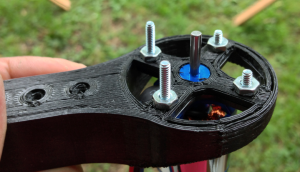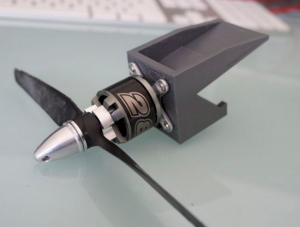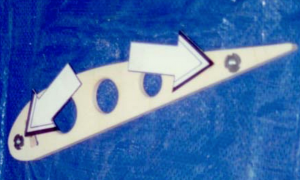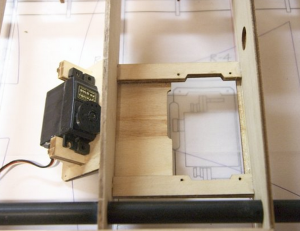An RC plane engineering company is in a race to develop a new fixed-wing airplane. The general configuration of the airplane has been determined but continued iteration on the structure and aerodynamic surfaces is needed. Up until this point the airplane has been prototyped using individually cut pieces of foam, balsa wood, and aluminum. Even with the aid of a laser cutter and CNC hot-wire foam cutter this has been a time consuming process since many of the parts are made from vastly different materials and are difficult to join together. Because of this the engineering team is often using glues and composites to hold the parts together, which makes it near impossible to replace or modify parts thus making design iteration difficult.
As with their other fixed wing airplanes, and as is an industry norm, the company eventually aims to mass produce the design from aluminum and polystyrene. Aluminum provides the structural rigidity necessary to form a solid airframe, especially for enduring the high stresses present at the motor mounts. Polystyrene is a light-weight plastic which can be easily molded into the complex shapes necessary to produce the aerodynamic surfaces of the aircraft. Furthermore, polystyrene can be injection molded to contain thread inserts to provide attachment points to the airframe and other internal hardware. This however, is only cost effective for large production runs.
The design team has previously tried using 3D printers to more rapidly produce and test structural components. While helpful in some instances, the team has generally found that cost effective 3D printed parts are not sufficiently strong for constructing load bearing airframe components, and prone to mechanical failure at the interfaces between components. Efforts to work around this problem have been made, but usually involve designing a special ‘thickened’ version of the part for 3D printing, which must then be redesigned when transitioning to large volume manufacturing using polystyrene. This extra design step uses up valuable team member time and upsets the weight, balance, and aeroelastic properties of the aircraft. The team however has remarked that 3D printing’s ability to easily incorporate more complex features, such as wire runs, electronics mounts, and access ports into their project is a great benefit.
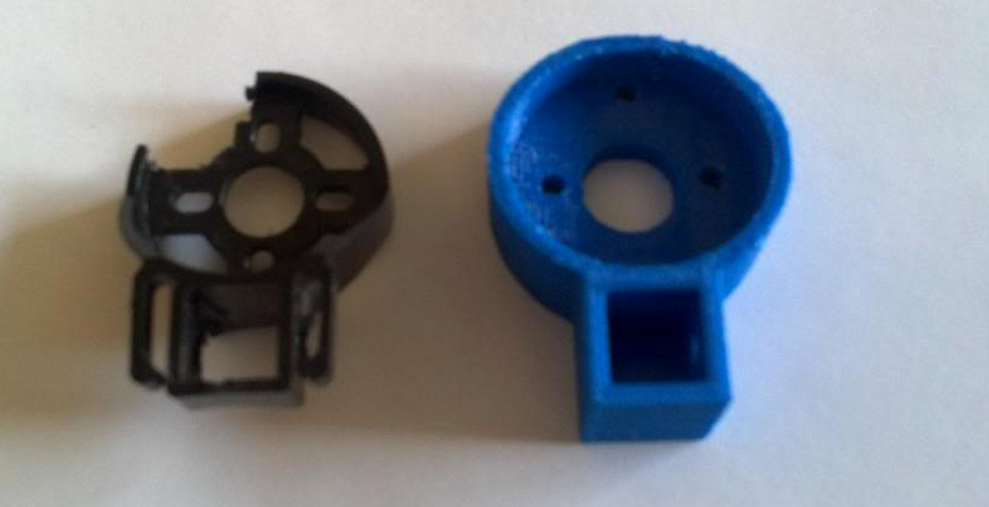
Example of failed 3D printed motor mount and a less desirable ‘thickened’ replacement necessary to support the loads.
Recently, as part of an experiment to improve their design process, the aircraft design team purchased an ADD_IN 4DOF 3D printer. This printer contains an extra mechanical degree of freedom and a special slicing software to enable 3D printing of complex parts that include embedded COTS items. The cost of the printer was comparable to other FDM 3D printers, and thus was not a significant burden to the small company. Since the printer looked and operated in nearly the same manner as their other 3D printers, the employees were immediately able to start using the printer without any additional training.
The first project the 4DOF printer was applied to was development of the aircraft’s motor mount. The motor mount is a particularly challenging component since it must be strong enough to withstand large forces and moments imparted by the motor, propeller, and occasional crash landings, but also be light weight since it is the most forward part of the aircraft where weight is a premium. In these regards 3D printed parts had previously failed due to their poor material properties, especially with the motor mounting bolts loosening, stripping and pulling out from the plastic part. Using the ADD_IN printer the team was able to produce a 3D printed part directly from the airplane’s CAD design, and include threaded inserts which could securely attach the motor and distribute the forces within the motor mount thus preventing material failure. The new motor mount was produced in half the time and with fewer resources than the previous aluminum-balsa wood-glue version, and thus enabled the team to conduct more frequent tests and design iterations.
In another instance, the engineering team decided to experiment with using the 4DOF printer to produce a wing rib. This particular wing rib had been causing difficulty since it established both the aerodynamic profile of the wing, but also was the structural mount for the mechanism that actuated the ailerons. Because of this it needed to be particularly rigid, and provide mounting for numerous bearings, sensors, and the aileron motor, and have a precise complex outer geometry to define the airfoil shape of the wing. All of these requirements had made prototyping in balsa-wood particularly difficult, and often the team had to pay large sums to have the part CNC machined.
Immediately, the 4DOF printer was able to overcome these issues. Incorporation of screw inserts, aluminum stiffeners, and a special aluminum socket for connection with the wing spar provided the structural rigidity needed. Because 4DOF printers can produce complex 3-dimensional parts, the bearing and motor mounts needed were not only incorporated into the wing rib, but actually replaced with integrated features in the rib which directly held the bearings and motor and reduced the overall part count. Finally, since the 4DOF printer can print around complex shapes, even the sensors used in the aileron actuation mechanism could be incorporated directly into the wing rib, thus greatly simplifying the whole assembly. Again, producing the wing rib required only a fraction of the time as needed for former methods, and the result achieved was much higher than previously achievable. Rapid design iteration perfected the part, and helped to significantly reduce the time-to-market of the RC airplane engineering company’s newest airplane.
The case of the fixed-wing drone manufacturer is not unique. Thousands of companies today extensively rely on 3D printing to rapidly prototype parts and iterate designs. Improving the efficiency of this process even a small amount can have multiplicative effects on the quality of a resulting product. Strong, lightweight 3D printed parts and parts with integrated sensors and electronics represent a significant new advance in 3D printing technology that will help to provide rapid prototyping, mass customization, and lower cost parts to a variety of both businesses and consumers.

